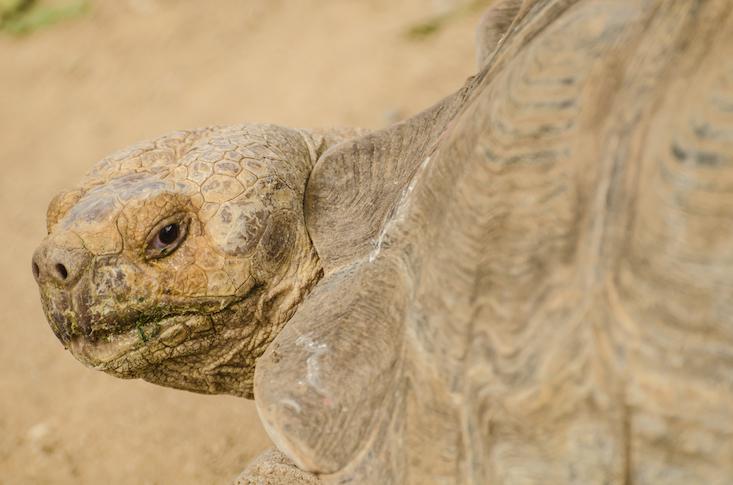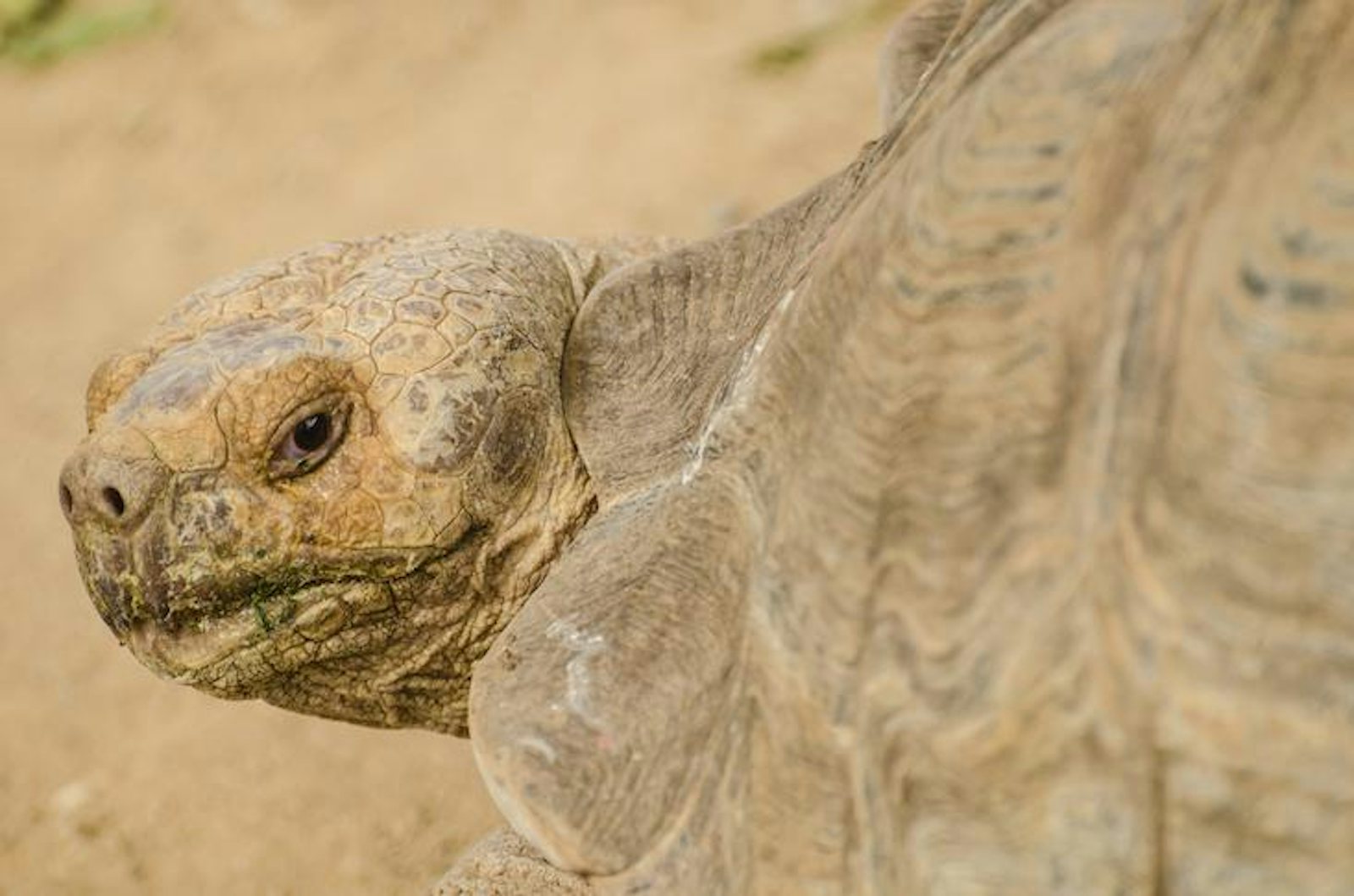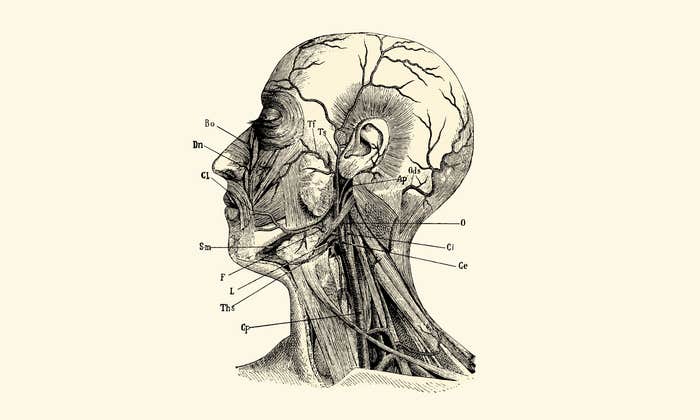To humans, aging can seem to be inextricably linked with physical decline. In 1975, “on a whim,” the photographer Nicholas Nixon decided to illustrate this process. That year he took a picture of his wife and her three sisters standing together, shoulder-to-shoulder; and every year after, for four decades, they stood for a picture in roughly the same position. The transformation of each woman as they age is striking. “We detect more sorrow, perhaps, in the eyes, more weight in the once-fresh brows,” wrote the novelist Susan Minot in the New York Times Magazine, in 2014, when the last photo was taken. “This is what it looks like to grow old.”

But the way humans age isn’t necessarily typical of most organisms. There’s the desert tortoise, for example, whose mortality rate—or chance of dying—declines as it gets older. Unlike a human, the tortoise is much more likely to die young than old. And the hermit crab and the collared flycatcher age differently than both humans and tortoises; their chances of dying and reproducing don’t change at all in adulthood. Then there’s the freshwater hydra, Hydra magnipapillata, which doesn’t deteriorate with age, or senesce, at all. Under protected laboratory conditions, researchers predict 5 percent of adult hydras would still be alive and well after 1,400 years. “All species age, they get one year older every year. But not all of them senesce,” says Owen Jones, an evolutionary biologist at the University of Southern Denmark. “Age is just a number—it’s senescence that we should worry about.”
The difference is important. Aging simply means getting older, says Jones, while senescence includes the negative effects humans normally associate with old age: physical and mental deterioration and reduced fertility. For humans, senescence is a big issue—perhaps the biggest one. We want to live longer without senescing. “Why have we”—and other senescing animals—“come to this?” Jones says. He wonders if at some point evolution selected for senescence because it was, for whatever reason, advantageous. “I don’t think we really know,” he says. “We can head towards that answer by analyzing data and figure out how those steps were taken.”
“The evolution of aging can take unanticipated turns when mutations have unexpected phenotypic effects.”
A 2007 study, for example, tried to see if senescence stretched all the way back to bacterial evolution. The researchers, led by Martin Ackermann, an evolutionary biologist at the Swiss Federal Institute of Technology in Zurich, monitored populations of Caulobacter crescentus bacteria in their laboratory, for 2000 generations, to “test the evolutionary theory of aging at a basic level of biological organization: populations of unicellular organisms” (in the study, “aging” and “senescence” are synonymous).
What Ackermann and his team found is that even individual bacterial cells aren’t immune to senescence: Genetic mutations with a negative effect specific to late age—no costs early in life—do occur in bacterial populations, and they result in lower reproduction rates and eventually death. But these were relatively rare; most of the mutations that did occur were positive ones, without any negative correlations: “The mutations that increased growth rates by improving early life,” Ackermann and his colleagues write, “did not typically entail costs later in life.”
Ackerman and his colleagues say that this supports previous findings that “the evolution of aging can take unanticipated turns when mutations have unexpected phenotypic effects.” Some organisms, for instance, have evolved particular strategies that help diminish the effects of aging, or senescence. Some plants and marine iguanas, for example, engage in adaptive shrinking (growing smaller in times of scarcity); some fish and reptiles display indeterminate growing (growing larger and more fertile their entire lives); and some, of course, go dormant (into hibernation). “None of these strategies are better [than the other]—they’re just doing the same thing: maintaining your population,” Jones says. The key for humans will be figuring out how different organisms use these mechanisms and whether we can recruit them for our own benefit.
The problem, Jones says, is how little we know about senescence across species. He estimates we have good, long-term individual-based data—which follows numerous randomly selected members of a population from birth to death—for less than 5 percent of vertebrate species, which make up fewer than 5 percent of known species. What we have for plants, fungi, and bacteria is even less. The paucity of knowledge isn’t for lack of trying; demographic research of the kind Jones mentions just takes much more time and energy than, say, sequencing an animal’s genes.
To compile demographic data, you have to track numerous members of a population during their lifespan to chart whether they senesce with age. One example is Jones’ work with a group that’s looking at the demography of mistletoe, a hemiparasitic plant (they rely on a host plant for some of their needs, but also use the sun’s energy to make sugars). If the organisms don’t senesce, researchers try to identify any age-related changes and understand why they occur—an organism that doesn’t senesce, for example, may increase its rate of reproduction as it ages. It’s especially challenging for researchers looking at hard-to-access creatures in the wild or plants with lifespans that stretch into the hundreds or thousands of years.
Without the knowledge of how different species cope with or avoid senescence, there’s no chance we’ll be able to utilize, or adapt, the same mechanisms for humans, says Jones. He hopes that someday there might be more data for organisms like jelly-fish or cuttlefish. So little is known about them, and they might offer a key to the question of how to negate human senescence. Maybe then we’ll find methods for increasing human longevity, by slowing the senescence process or constantly pushing back the point at which we start to senesce.
“It’s a really big question,” Jones says. “And this would really worry pension companies and insurance companies” since the need for long-term health care might increase. “If we can slow the rate of aging a couple percent,” he says, “it’s going to cost them billions.”
Lorraine Boissoneault writes about science, nature, history, and adventure. Her first book, The Last Voyageurs, came out in April. Follow her on Twitter @boissolm.


























